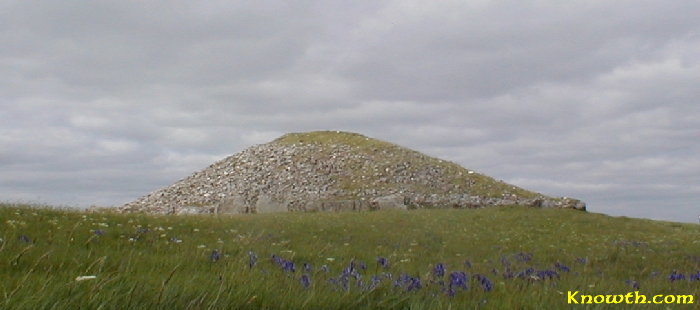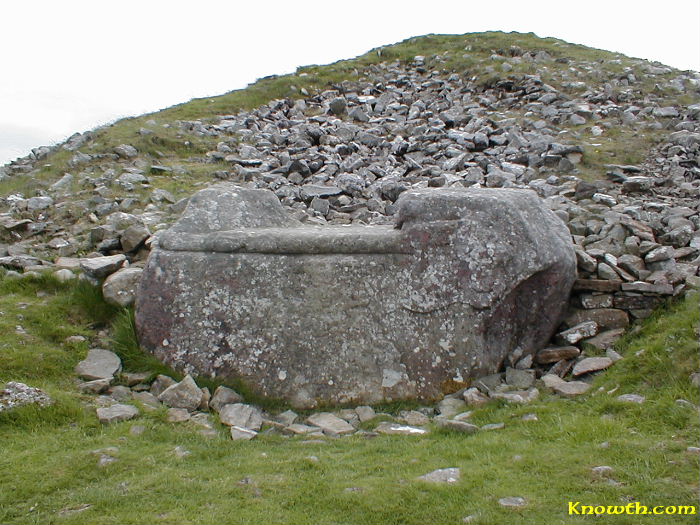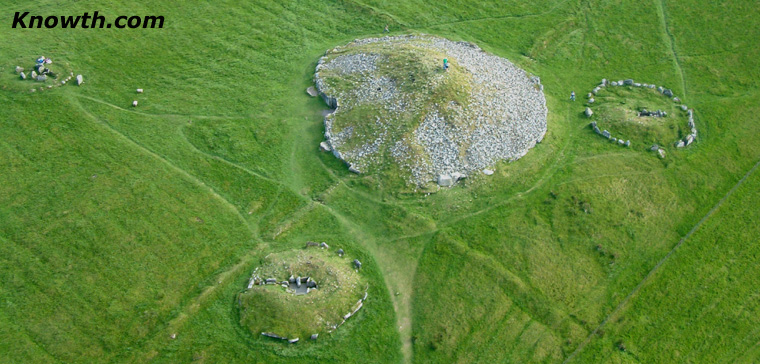
A taste of the unexpected: subverting mentalités through the motifs and settings of Irish passage tombs.
Andrew Cochrane 2005 - Page 3The possible application and erosion of natural pigment (Note 1) (via liquids?) may also have subtly evoked 'energies' against diverse authority that was opposed to change. Whether these authorities were the dead, mythic entities or social elders will remain unknown. We can, however, argue that the idea of the carnivalesque allows people to move beyond the limits of the material, beyond the stone and beyond the motifs themselves. At Loughcrew there are two episodes of the superimposition of one motif with another (Jones 2004, 209, Fig. 21.6). The superimposition of motifs in this context may be a sublime celebration of a world layered upon layer and turned upside down, the celebration and animation of life in a place of the dead. Such a proposition recalls Nietzsche's description of a Dionysian fête, in which the revellers under the influence of narcotic drinks forever exult in the transformation of appearances (Stam 1989, 89).
This paper incorporates Jones's (2004; see also O'Sullivan 1986; Eogan 1996) position, but was initial inspired by C. S. Lewis's (1971) paper 'meditation in a toolshed', in which he stressed the differences between looking at and looking along a particular idea. I am concerned that past models regarding Irish passage tomb motifs have focused more on the structural forms of motifs than the processes that helped produce them (see also Jones 2004, 202-3). They therefore are more about looking at the forms rather than looking along the processes.
Indeed, Conkey (1982) stated that archaeologists tend to focus more on the 'secretions' of a process (that is the structured motifs), because they do not know how to deal with the process itself (see also Thomas 2004, 145-161). The motifs on the Loughcrew passage tombs offer a unique opportunity to focus on these processes of 'secretion' as they were produced in chronological sequences. By citing specific examples from Carnbane East and West, I will demonstrate how the initial creation of images and the superimposition of particular motifs may be viewed as the embodiments of eternally creative carnivalesque principles. Individual stones are described in detail to emphasis the repetitions and differences that are played out at Loughcrew.
East meets West - Cairn T
This cairn is the focal tomb on Carnbane East and is a cruciform passage tomb 10m long (see image below). It is also a 'stalled' structure similar to Tumulus J at Dowth, Boyne Valley (Herity 1974, 41). Cairn T, c. 35m in diameter, is visually noticeable from the lower plains surrounding Loughcrew and from most of the uneven topography below the hills themselves (Herity 1974, 42; Fraser 1998, 214).Interestingly, as one reaches near the summit of Carnbane East, from any direction, Cairn T and the other cairns disappear from view. It is not until one is three-quarters of the way up that the cairns appear again. This feature has been argued to represent the visual capitalisation of the natural aspects of the hill, architecturally creating an additional visual and physical boundary for a particular sense of being or experience (Fraser 1998, 215).
The entrance constitutes a V-shaped in-turning in the kerb surrounding the cairn, with the façade emphasised by setting increasingly larger stones towards the entrance (Herity 1974, 42). Both Conwell (1866, 372) and Rotherham (1895, 311) reported loose quartz lumps outside the entrance and base of K29, or the 'Hag's chair' (Conwell 1866, 371).
Conwell also described a wall of quartz around the entire base of the cairn (1872, 91). Regrettably, due to undocumented restoration work in the 1940s, there is no surviving evidence for it (Shee Twohig 1981, 214; 1996, 73; McMann 1994, 537). Here, the tomb is thus described in its current state. Two uprights flank the opening to the passage, itself covered by a large lintel block, completing the façade and oriented south-east towards the Boyne (McMann 1994, 535). There is a central octagonal chamber (2 – 2.5m in diameter) with three adjoining recesses and a corbelled roof. All the recesses and main passage have a high sill (c. 0.5m high); above each of these there is a limestone lintel that interlocks with the uprights of the central chamber. In total, there are 19 decorated orthostats, 2 decorated sillstones, 8 decorated roofstones and 1 decorated kerbstone at Cairn T (Shee Twohig 1981, 214).
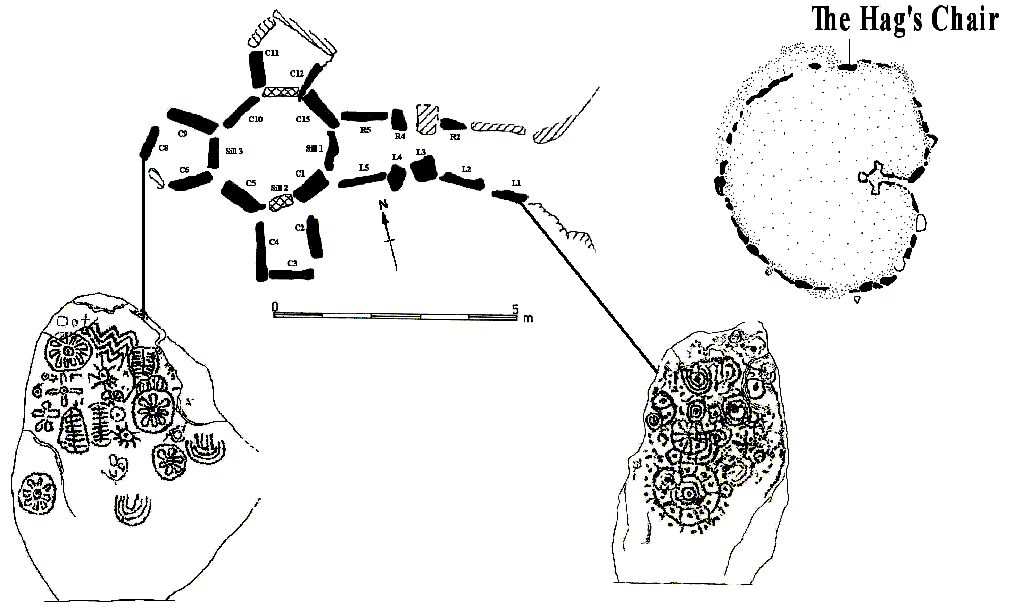
Plan of Cairn T with illustrations of C8 and L1, Loughcrew, Co. Meath. Scale represents internal plan only. (after Shee Twohig 1981, Figs. 232, 325; McMann 1993, 26).
The entrance to the passage is demarcated with a decorated sillstone marked with irregular motifs (including 3 parallel arcs), and the two stones facing the passage (C1 and C15) also have similar designs to each other. Located near the entrance on the left hand side are two heavily decorated stones: L1 has motifs covering the entire front face of the stone, producing a striking arrangement of dots and concentric circles. Similar designs are presented on the nearby jambstones L2, L3, L4 and the opposing R4, while R5 and L5 are similar yet with more concentric circles and cupmarks (Shee Twohig 1981, figs. 232-34; 1996, 73).
The stones R5 and L5 mark the last part of the passageway into the main chamber, and it has been suggested that the cupmarks on them were deepened artificially by chalk and stone balls, such as those found in Cairn L (Conwell 1866, 368-9; also see below here), being repeatedly inserted into them (McMann 1993, 28). These repeated interactive performances are thought to possibly be part of processes that dissolve boundaries between humans and stone or even worlds during 'normal' or altered-states of consciousness (McMann 1994, 541). Indeed, the actual cup-hole may have been understood as a circular tunnel extending into the surface of the stone (Bradley 1995, 113). Such acts that incorporate the inversion of surfaces fit well with the discussions of the carnivalesque.
All the chamber orthostats include motifs (C1, C5, C10 and C15), predominantly circles arcs and serpentiforms, as do the sills at the entrances (Shee Twohig 1981, 214-5). Speculating on the possible stimuli especially for these 'snake' images on some of the stones, we can consider schizophrenia as a pathological condition, which induces not only entoptic phenomena (Note 2), but also auditory hallucinations (Al-Issa 1978). A recent study conducted by Horowitz (1964) investigated the differences and associations between what schizophrenic patients described and drew after hallucinations in an attempt to determine their etiology.
For example, initial descriptions of 'vicious snakes' were drawn as wavy lines, whilst 'two armies struggling over my soul' arose from the subjective experience of seeing moving sets of dots (Horowitz 1964, 513). Horowitz's (1964; 1975) studies are interesting, as they suggest that once entoptic or geometric images are experienced, subjective interpretation and social rhetoric automatically consume them and that the designs can readily be converted into descriptive frameworks. It is possible that if some modern people assign these patterns to conversations and thoughts, then the inhabitants of Neolithic Ireland may have as well.
Next Page (4)
Previous Page (2)
Note 1:
Unfortunately, there is no hard evidence at the moment for the stones in Ireland ever being painted. Breuil and Macalister (1921, 4) suggested that some stones were originally painted and that environmental conditions have not permitted survival. Certainly, paint survives on some Iberian megalithic imagery, where motifs in red and/or black were applied to a white background (Shee-Twohig 1981, 32-5). Traces of pigment have recently been found by taking infra-red photographs of decorated surfaces in the main chamber at Maeshowe, Orkney (Bradley et al. 2000). <Back>Note 2:
The term 'entoptic' refers to visual sensations derived from the structure of the optic system anywhere from the eyeball to the cortex (see Klüver 1926; Knoll et al. 1963; Siegal 1977). These images are generally multicoloured geometric or abstract shapes and are perceived when the eyes are closed, although they can occur as external hallucinations (Hodgson 2000). Helvenston and Bahn (2002, 11) have recently requested that archaeologists dispense with the term 'entopic', but I will continue to use it here, as it has been adopted into the general archaeological literature (e.g. Clottes and Lewis-Williams 1998; Hodgson 2000; Ross 2001), and because this reduces possible misunderstandings. <Back>Boyne Valley Private Day Tour
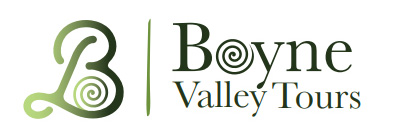 Immerse yourself in the rich heritage and culture of the Boyne Valley with our full-day private tours.
Visit Newgrange World Heritage site, explore the Hill of Slane, where Saint Patrick famously lit the Paschal fire.
Discover the Hill of Tara, the ancient seat of power for the High Kings of Ireland.
Book Now
Immerse yourself in the rich heritage and culture of the Boyne Valley with our full-day private tours.
Visit Newgrange World Heritage site, explore the Hill of Slane, where Saint Patrick famously lit the Paschal fire.
Discover the Hill of Tara, the ancient seat of power for the High Kings of Ireland.
Book Now
Home
| Newgrange
| Knowth
| Dowth
| Hill of Tara
| Fourknocks
| Loughcrew
| More Places
| Labyrinths
| Local Info
| Art Works
| Articles
| Images
| Books
| Links
| Boyne Valley Tours
| Contact

